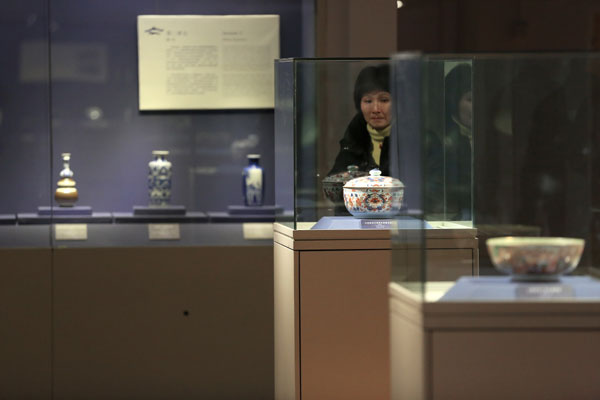 |
|
A visitor views an ancient porcelain exhibition in the Palace Museum in Beijing. [Photo by Jiang Dong/China Daily] |
A new set of guidelines is unveiled to regulate China's vast museum sector, but experts say more needs to be done, Wang Kaihao reports.
In China, finding museums has seldom been a problem. But other than the big and established ones, many fail to be taken seriously by visitors because they don't have the resources to manage their collections or haven't been officially registered as museums.
However, change is afoot. Last week, Premier Li Keqiang set the course to make the country's museums' sector less chaotic by signing the State Council's first regulation of museums, effective from March 20.
The new rules demand that all museums have collection reservation areas, complete management systems and approval documents.
"The greatest breakthrough is that the new rules give equal status to State-owned museums and private ones," Duan Yong, head of the museum supervision office for the State Administration of Cultural Heritage, says.
"The two are no longer treated differently in terms of duties, qualifications, financial support or supervision."
China had 4,165 registered museums by the end of 2013, according to last year's statistics released by the State Administration of Cultural Heritage on May 18, International Museum Day.
Of these, 811 were privately owned. Together the museums attracted more than 600 million visitors in 2013.